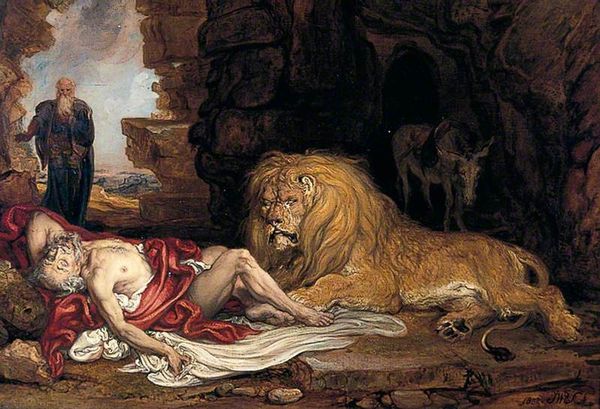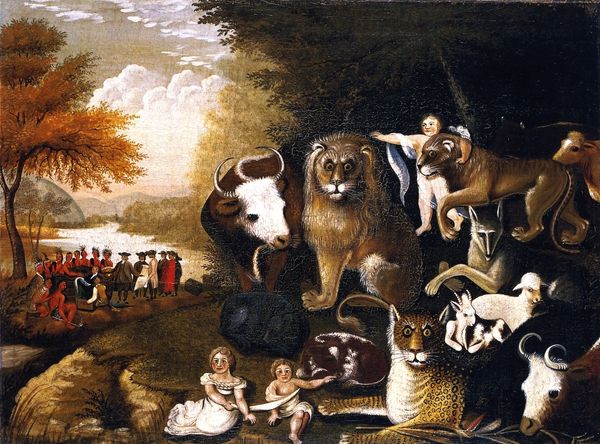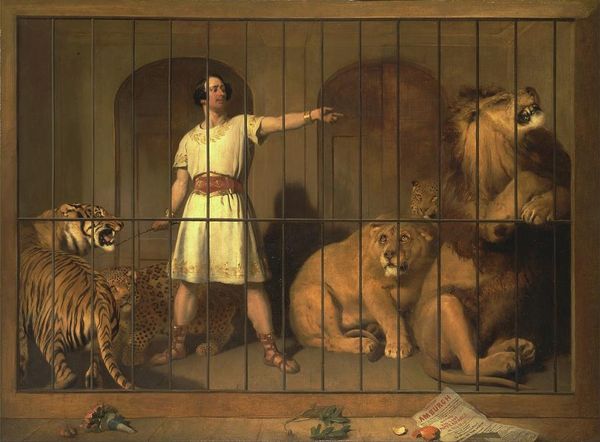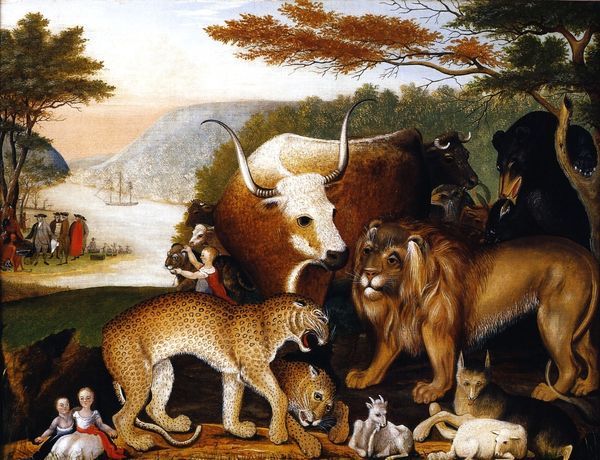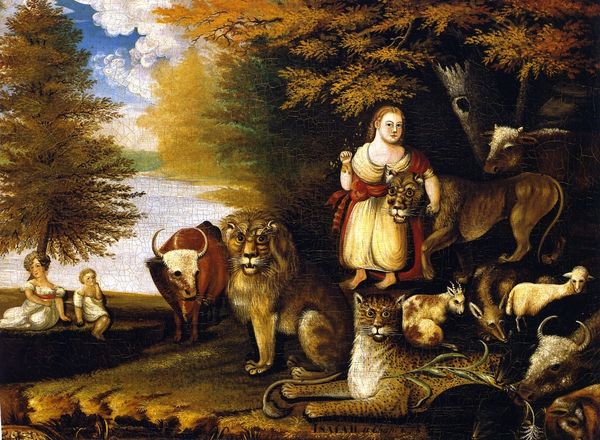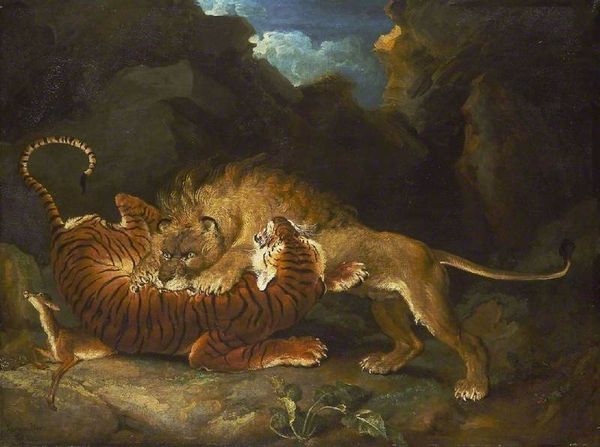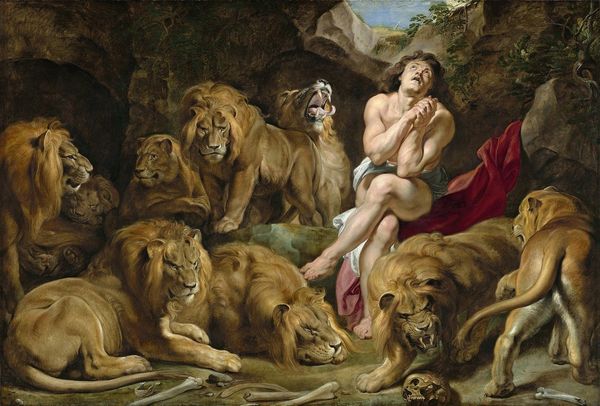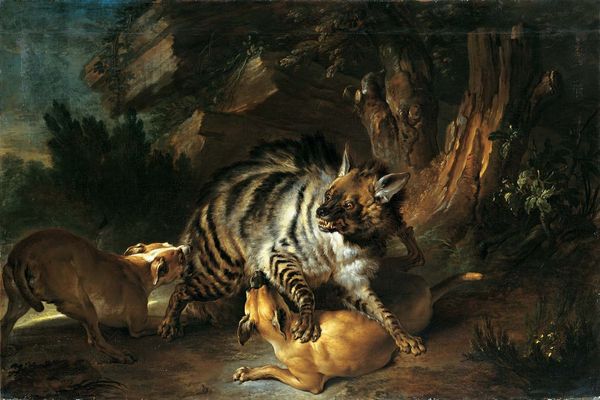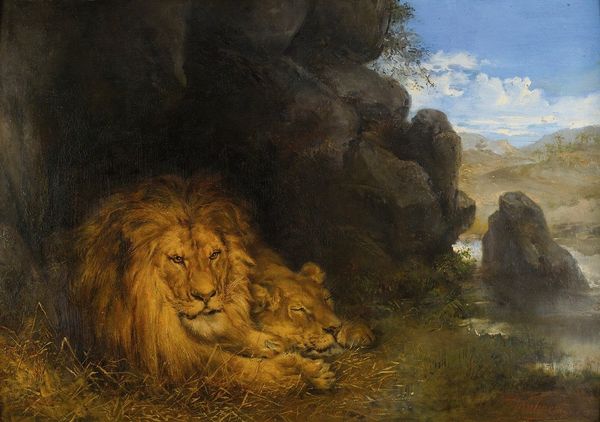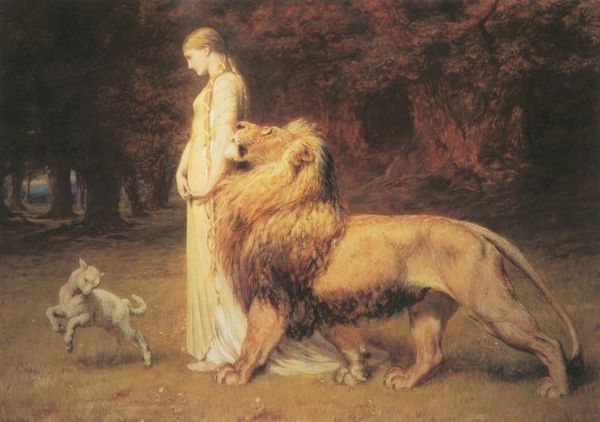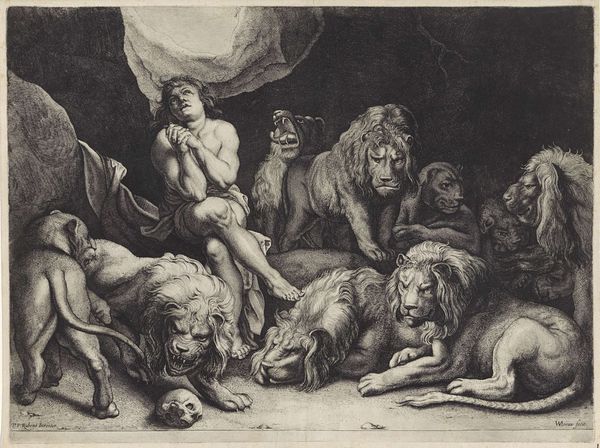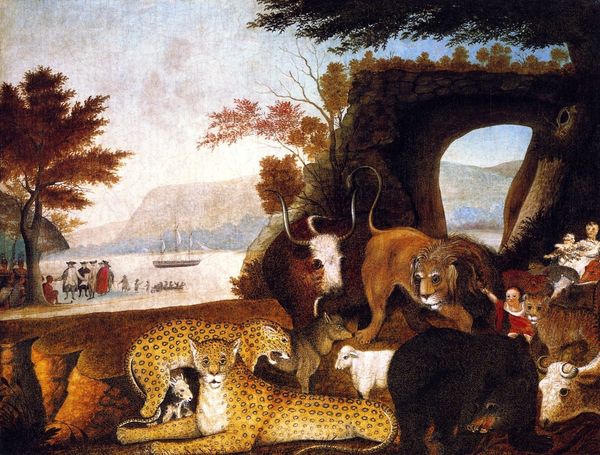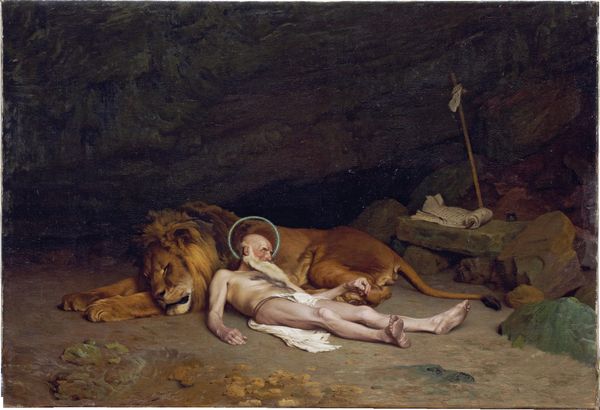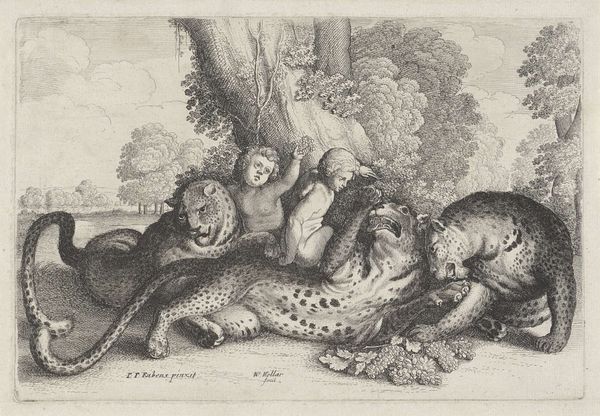
painting, oil-paint
#
portrait
#
animal
#
painting
#
oil-paint
#
romanticism
#
genre-painting
Dimensions: 113.7 x 174.8 cm
Copyright: Public domain
Curator: Edwin Landseer's "Isaac van Amburgh and his Animals," dating from 1839, captures a fascinating moment in popular entertainment history. What is your initial take on this composition? Editor: I’m immediately struck by the theatricality. It feels like a stage tableau—the cage bars, the shadowed audience, the wild animals posed so deliberately. It's potent and romanticized, but undeniably unsettling. Curator: Indeed, Landseer, known for his animal paintings, uses this oil-on-canvas work to present Van Amburgh, a famous animal tamer, as a figure of almost mythical control. Notice how the compositional structure places Van Amburgh at the center, subtly elevated by the animals themselves. Editor: There's an implied power dynamic that really comes through. It’s interesting that Van Amburgh touches the tiger, an act of obvious power, while a gentle lamb innocently leans on the tiger's fur. This creates a visual allegory—the wild pacified by man's influence, but with that lamb, I wonder what its ultimate fate is. Curator: Precisely. The contrast of light and shadow enhances this drama. The cool observation by those at the cages gives an impression of the public gaze as witness to Van Amburgh's daring spectacle, with a focus on the aesthetic treatment, the symbolism embedded within the arrangement. Editor: Landseer truly portrays this showman's dominance, though something seems off in this staged "harmony.” I sense tension even with such dramatic, well-placed lines and shades, or perhaps I’m just reading into that lion's slightly malevolent expression! It might simply speak to me personally on how human performative dominance feels to animals who get reduced into just props. Curator: It is open for interpretation; I find it is such ambiguity and masterful design is part of why this portrait resonates. Editor: For sure. It does raise questions about the nature of performance, control, and how we perceive wild animals, I just needed to give voice to my intuition! Curator: Quite, thank you, perhaps a valuable thought that's helpful to a new perspective, that will make way to many view points regarding this portrait's nature! Editor: Totally! Thank you for highlighting what I was unable to see or value on my initial analysis!
Comments
No comments
Be the first to comment and join the conversation on the ultimate creative platform.
